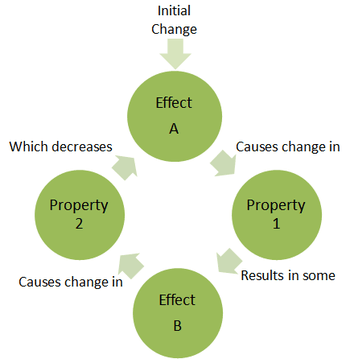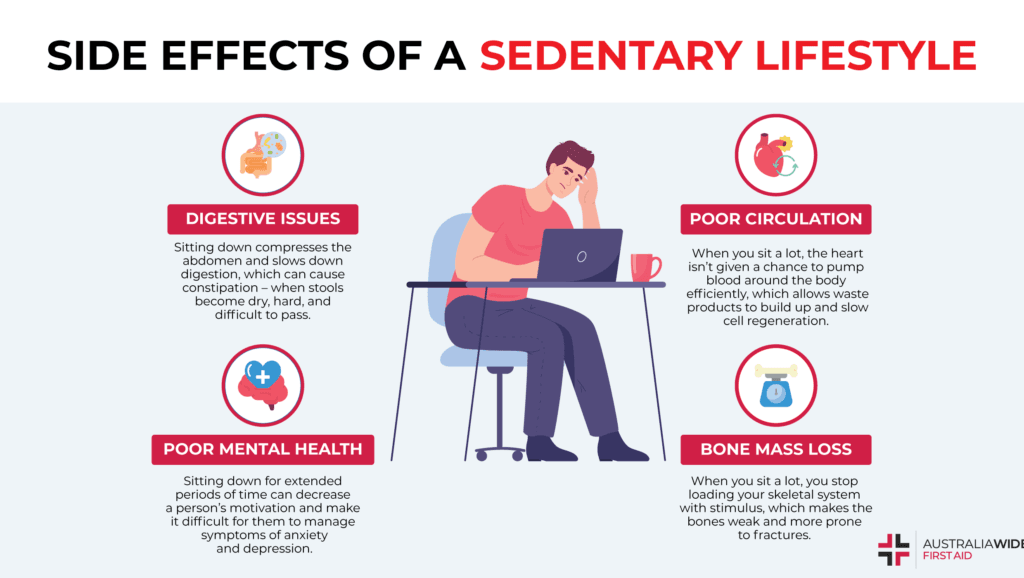Why Doesn’t Everyone Exercise?
Unpacking the Sedentary Lifestyle: How “I Just Don’t Feel Like It” Becomes a Way of Life and Fuels Long-Term Health Issues
Modern society tells us “exercise is medicine,” yet millions claim, “I just don’t feel like it.” So why doesn’t everyone exercise? What if this isn’t just a matter of laziness, but the outcome of our environment, habits, and even our culture? In this page, we’ll explore how the sedentary lifestyle develop, Why People Don’t Exercise, share statistics on inactivity that reveal its scope, and explain how these habits can lead to long-term problems like obesity, diabetes, and even cognitive decline.

Exploring How Sedentary Habits Emerge and Their Long-Term Toll on Our Health
Navigation / Table of Contents
- Why People Dont Exercise
- What Is Exercise?
- What Is a Sedentary Lifestyle?
- Statistics on Inactivity & Obesity
- How Sedentary Habits Form
- The Health Consequences of Inactivity
- Socioeconomic, Environmental & Cultural Barriers
- Psychological & Behavioral Insights
- Expert Voices & Success Stories
- Myth vs. Fact
- Taking the First Step

Many struggle with staying active due to psychological, social, and environmental factors. Below are the most common reasons why people don’t exercise and how these barriers can be overcome.
1. Lack of Motivation to Work Out
Exercise requires effort, and without immediate results, people lose motivation. Stress, mental fatigue, and the absence of a strong personal reason to stay active contribute to inactivity.
2. No Time for Exercise
A busy schedule makes it feel impossible to fit in workouts. However, short, high-efficiency workouts can help people stay active without a huge time commitment.
3. Fear of Judgment and Low Confidence
Many avoid exercise because they feel inexperienced or self-conscious at the gym. Overcoming this barrier often requires a mindset shift and gradual exposure to fitness environments.
4. How Sedentary Habits Form Over Time
A sedentary lifestyle develops gradually. Sitting for long hours at work, then unwinding with TV or social media, makes physical activity feel unnecessary. Over time, the body adapts to inactivity, making it harder to get started.
5. Lack of Knowledge on Where to Start
Confusion about workout plans, equipment, and proper form leads to inaction. Beginners benefit from simple, structured guidance to build confidence.
6. Exercise Feels Uncomfortable or Too Hard
Soreness, fatigue, and the effort required discourage many from continuing after their first few workouts. Starting with low-intensity exercise and gradually increasing intensity helps overcome this.
7. No Immediate Health Consequences
Unlike an unhealthy diet, which shows effects quickly, a lack of exercise causes long-term health risks that aren’t immediately noticeable. Because the consequences are delayed, many people postpone taking action.
How to Overcome These Barriers
The key to breaking the cycle is recognizing these obstacles and implementing small, sustainable changes. Even small daily movements can lead to long-term progress and habit formation.
Exercise is the key to a healthier, stronger, and more energetic life—but the truth is, many people don’t prioritize it. To exercise effectively, you need to challenge your body in ways that build strength, improve your heart health, and increase your energy. But it’s not just about moving; it’s about consistency, intensity, and balance.
So why doesn’t everyone exercise? It often comes down to lack of time, motivation, or simply not knowing where to start. But these excuses aren’t permanent roadblocks—they’re opportunities to take control of your health. With the right approach, exercise doesn’t have to be complicated. It can be as simple as taking a daily walk, doing a few minutes of stretching, or gradually building strength with simple exercises.
The benefits of exercise are undeniable: more energy, a stronger body, improved mood, and a longer, healthier life. The question isn’t why doesn’t everyone exercise—it’s why wouldn’t you? Start small, stay consistent, and soon you’ll feel the positive changes in your body and mind. It’s time to break the cycle of inactivity and unlock your full potential
Exercise is the key to a healthier, stronger, and more energetic life—but the truth is, many people don’t prioritize it. To exercise effectively, you need to challenge your body in ways that build strength, improve your heart health, and increase your energy. But it’s not just about moving; it’s about consistency, intensity, and balance.
So why doesn’t everyone exercise? It often comes down to lack of time, motivation, or simply not knowing where to start. But these excuses aren’t permanent roadblocks—they’re opportunities to take control of your health. With the right approach, exercise doesn’t have to be complicated. It can be as simple as taking a daily walk, doing a few minutes of stretching, or gradually building strength with simple exercises.
The benefits of exercise are undeniable: more energy, a stronger body, improved mood, and a longer, healthier life. The question isn’t why doesn’t everyone exercise—it’s why wouldn’t you? Start small, stay consistent, and soon you’ll feel the positive changes in your body and mind. It’s time to break the cycle of inactivity and unlock your full potential
⚡ Boosts Energy
Feeling drained? Exercise increases your stamina and makes everyday tasks feel easier. More energy, less fatigue.
💪 Strengthens Body & Mind
Regular exercise builds muscle, strengthens bones, and boosts mental clarity. Plus, it helps you stay flexible and injury-free.
🧠 Improves Mental Health
Exercise releases endorphins, fighting stress and anxiety while boosting mood and confidence. It’s your natural mood booster.
🔥 Supports Weight Management
Want to maintain a healthy weight? Exercise burns calories, increases metabolism, and helps manage body fat long-term.
⏳ Increases Longevity
Want to live longer? Regular exercise lowers your risk of chronic diseases and can add years to your life.
😴 Enhances Sleep
Struggling with sleep? Exercise improves sleep quality, making it easier to fall asleep and wake up refreshed.
🔥 Boosts Confidence
See your body change, feel stronger, and watch your self-esteem skyrocket as you hit new fitness milestones.
Why wait? Start small, stay consistent, and unlock the powerful benefits of exercise for a healthier, happier life!
A sedentary lifestyle is characterized by prolonged periods of sitting or lying down with little energy expenditure—typically activities that require ≤1.5 metabolic equivalents. This behavior isn’t simply “not exercising”; it’s a daily pattern that often includes commuting by car, desk jobs, and leisure time spent on screens. Over time, the absence of regular movement can lead to significant physical and mental health issues.

The Numbers Tell a Story:
Inactivity Prevalence:
Studies from large-scale datasets like the UK Biobank reveal that up to 79% of older adults report no regular exercise, while national surveys (such as those by the CDC) indicate that only about 23–25% of adults meet both aerobic and strength-training guidelines
Health Impact:
- According to a study in EatingWell (eatingwell.com), individuals who concentrate their exercise into one or two days (“weekend warriors”) reduce their risk of conditions like hypertension and diabetes by 23–46% compared to inactive individuals.
- A Guardian report (thetimes.co.uk) found that the most active individuals—those clocking about 160 minutes of movement daily—had a 73% lower risk of premature death than their least active peers.
Obesity Trends:
Sedentary behavior is a key driver behind the obesity epidemic. Research indicates that prolonged inactivity can lead to a significant drop in metabolic rate, meaning that even normal calorie consumption can result in weight gain over time
Economic & Societal Cost:
Globally, it’s estimated that millions of deaths per year are attributable to insufficient physical activity, which also costs healthcare systems billions in preventable disease management.
These statistics underscore the immense public health challenge posed by sedentary lifestyles
The Modern Environment:
Instant Gratification:
Today’s digital world provides constant, immediate rewards—think streaming services, social media, and on-demand entertainment. These experiences condition our brains to choose activities that require minimal effort and deliver instant pleasure.
Built for Convenience:
From remote work and long commutes to online shopping and food delivery, our everyday environments are designed to reduce physical effort. This constant convenience leads to less incidental movement.
Habit Formation & Behavioral Inertia:
Repetition Creates Routine:
When our daily schedule consists largely of sitting (at work, during commutes, at home), these behaviors quickly become habitual. The brain establishes a “default mode” that prefers comfort, making it challenging to initiate change.
Cognitive Biases:
Hyperbolic discounting—a tendency to undervalue future rewards—makes it hard for people to commit to exercise since its benefits (improved health, longevity) are delayed compared to the immediate comfort of inactivity.
Societal Influences:
Cultural Messaging:
Media often promotes extreme fitness ideals and “perfect” bodies, which can leave many feeling that exercise is only for the elite. This cultural pressure may inadvertently discourage the average person from trying.
Economic Barriers:
When exercise is packaged as a luxury (with expensive gyms and specialized classes), those with limited resources may feel excluded.
The Vicious Cycle: How Inactivity Leads to Obesity and Beyond
1. Physical Decline:
Muscle Loss & Metabolic Slowdown:
Without regular physical activity, muscles begin to atrophy. Since muscle tissue burns more calories than fat, a decrease in muscle mass leads to a slower metabolism, making weight gain more likely.
Energy Imbalance:
When calorie intake remains the same but energy expenditure drops, the excess energy is stored as fat. Over time, this imbalance contributes directly to obesity.
2. Chronic Disease Risk:
Cardiometabolic Conditions:
Lack of exercise is linked to a higher incidence of diabetes, hypertension, and cardiovascular diseases. For example, weekend warriors see a reduction in diabetes risk by up to 43–46% compared to inactive individuals (eatingwell.com).
Cognitive Decline:
Studies indicate that inactivity is associated with a greater risk of mild dementia. In one study, 26% of inactive individuals met criteria for mild dementia, compared to 14% among those who exercised—even intermittently.
3. Mental Health Impact:
Mood and Motivation:
Sedentary behavior can also worsen mental health. Chronic inactivity is associated with increased rates of depression and anxiety, partly because regular exercise promotes the release of endorphins and other mood-enhancing chemicals.

Urban and Work Environments:
Long Hours & Sedentary Jobs:
Many modern jobs require prolonged sitting, leaving little time or energy for exercise. In urban settings, extended commutes and the lack of accessible parks exacerbate this problem.
Economic Constraints:
The cost of gym memberships, fitness classes, or even proper workout gear can be prohibitive. When exercise is seen as a costly endeavor, those with fewer resources may forgo it entirely.
Cultural Pressures:
Media and Idealized Images:
The fitness industry often promotes unrealistic images of what a “fit” person looks like. For many, this creates an environment of intimidation rather than inspiration.
Social Norms:
In some communities, sedentary behavior is the norm. If your peers and family are not active, the expectation to exercise regularly is diminished.
Environmental Stressors:
Safety and Infrastructure:
Lack of safe, pedestrian-friendly spaces can deter outdoor activity. Areas with high pollution, noise, or traffic congestion discourage regular exercise.
Are our cities, workplaces, and cultural narratives inadvertently promoting inactivity?
Inside the Mind: Why Inactivity Feels Easier Than It Should
Delayed Rewards and Cognitive Bias:
Immediate vs. Delayed Gratification:
The brain tends to favor short-term comfort over long-term benefits. Since the positive outcomes of exercise (improved health, longevity, enhanced mood) are not instantly tangible, many choose immediate relaxation instead.
Stress and Sleep Deficits:
Cycle of Fatigue:
Chronic stress and poor sleep further reduce energy levels and diminish motivation. When you’re mentally drained, even a simple workout can feel like an overwhelming burden.
Habit and Behavioral Inertia:
Default Mode of Inactivity:
Once sedentary behavior becomes routine, the brain creates neural pathways that favor this low-effort state. Breaking these habits requires intentional, small-scale changes—like short walks or light stretching—that gradually rewire your routine.
Self-Efficacy and Social Comparison:
Fear of Failure or Judgment:
Many people avoid exercise because they fear not measuring up or being judged in public settings. Building self-confidence through small successes is key to overcoming this barrier.
Nudging Towards Activity:
Behavioral “Nudges”:
Tools such as fitness trackers, reminder apps, and environmental cues (like signage encouraging stair use) can gently push us towards more movement without a drastic shift in mindset.
Actionable Insight: Start by integrating 5–10 minute bursts of activity throughout your day. Every small step can begin to shift your brain away from a sedentary default.
What the Experts Say:
Fitness Psychologists & Trainers:
Interviews reveal that “not feeling like it” is often a symptom of modern stress and environmental design rather than mere laziness.
Success Stories:
Real-life testimonials showcase how individuals transformed their habits by starting small—like taking the stairs, short daily walks, or home workout routines—leading to weight loss and improved overall health.
Inside the Mind: Why Inactivity Feels Easier Than It Should
| Myth | Fact | Actionable Tip |
|---|
| “I’m too busy to exercise.” | Even 10-minute bursts add up and can improve health significantly. | Schedule micro-workouts during breaks. |
| “I just don’t feel like it.” | Modern distractions and chronic stress rewires our reward system. | Set small, daily goals to gradually shift your habits. |
| “Gyms are too expensive and intimidating.” | You can achieve great results with home workouts, walking, or community classes. | Try free online workout videos or take a brisk walk outdoors. |
Final Thoughts:
Our sedentary habits are not simply about laziness—they are the product of complex environmental, psychological, and socioeconomic forces. Over time, these habits contribute to a vicious cycle of muscle loss, metabolic slowdown, and ultimately obesity and chronic disease.
Your Action Plan:
- Start Small: Begin with a 10-minute walk or a brief stretching session every day.
- Use Technology: Explore fitness apps or wearable devices that nudge you to move more.
- Build a Support System: Join community groups or online forums for accountability and encouragement.
- Rethink Your Environment: Look for opportunities to add movement to your daily routine—take the stairs, stand while working, or even dance during breaks.

